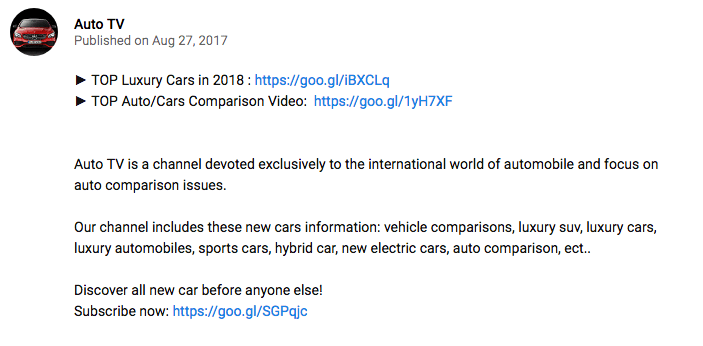When marketers talk about search engine optimization (SEO), it’s often assumed that they have Google in mind. It’s true that Google is the world’s biggest search engine, but #2 on that list might surprise you. It’s YouTube—and as video content becomes increasingly popular, it’s never been more beneficial to master video SEO, ensuring your company’s videos are highly visible and easily discovered on the world’s second most important search engine.
Here are a few tips and strategies that will help you optimize your videos for YouTube rankings.
Include Keywords—and Position Them Properly
It goes without saying that you should have some target keywords in mind; that’s something that’s true across SEO. And it should likewise be self-evident to use these keywords in your YouTube optimization efforts—specifically in the titles of your videos.
What you may not realize is that it matters very much where you position keywords within your video titles. YouTube actually places more weight on words at the beginning of your title, which is why that’s where your target keyword should be.
Consider these two examples—alternate titles for the same video:
- Tips and Tricks for Enhancing Your Video SEO
- Video SEO: Some Tips and Tricks for Better Rankings
Assuming that the target keyword here is video SEO, not tips and tricks, the second title is much more effective, simply because its keywords are front-loaded.
What About Tags?
If titles are meaningful for YouTube SEO, so are tags. Video tags are designed to tell YouTube what your video is about—and thus, how it should be categorized. You might think more tags is better, but actually, that’s not the case; in fact, including a bunch of different tags can often obscure your meaning, and make it harder for YouTube to know what your video is truly about.
You can make a big impact with a small handful of tags.
- Make sure to include one or two of your target keywords—whichever are relevant to the topic.
- Then include some alternates and variations—basically synonyms for those target keywords.
- Then include one or two keywords to reflect the general theme or category of your content; for instance, if your target keyword is how to repair a clogged drain, your general categories might be plumbing or home repair.
All said, you shouldn’t need but six or seven keywords to tell YouTube what your content is all about.
Don’t Forget your Video Descriptions
Another key component in your YouTube SEO is the video description. Descriptions, like tags, help tell YouTube what your video is all about—only here, more information usually is better. A reasonably long description—200 words or so—can help you to fully summarize the scope of your content.
There’s some balance required here, as you want your descriptions to be meaningful, but you also don’t want to reveal every single point that your video makes—or else, people can just read it and not have to watch the video! Tease out some of your main themes and tell viewers what they can expect to learn, without giving away all your value points.
(Example of a YouTube Video Description)
Aim for Engagement
When people engage with your videos, YouTube takes it as a sign that your content is strong and compelling—and thus, it tends to rank your videos higher. Engagement—which includes shares, likes, comments, and subscriptions—is an integral part of video optimization. (Comments are especially useful for rankings.)
Of course, you can’t simply wave a wand to get more engagement, but you can lead your viewers in the right direction. Make sure each video has a call to action at the end—and make them as specific as you can. Leave a comment is a fine call to action, but providing a specific question or topic would make it even better.
Get Click-Throughs, Too
click-through rates are also key metrics that YouTube uses to determine rankings. One of the most effective ways to get more click-throughs is to use click-through magnets—basically, little thumbnail images that brand your videos, usually positioned in a corner.
It’s important to have thumbnail images that don’t distract from the video, but you want them to be visible, too—so choose colors that don’t blend in with YouTube’s own red, black, and white. Also try to include some nice, bold text—no more than 25-30 characters—in your thumbnail.
Make Your Videos Long (But Not Too Long)
A common question about YouTube videos: How long should they be? Our answer is that longer is usually better, within reason. Here’s why: YouTube wants people to spend time on YouTube, and as such, it encourages those videos that hold people’s attention for longer. As such, a video that keeps people watching for 15 minutes is usually going to rank better than a video that’s just a couple minutes long.
This doesn’t mean you should sacrifice the quality of your videos by padding them out with fluff, but, whenever possible, aim for nine or 10 or even 15 minutes.
We Can Guide You Through Video SEO
These strategies should point you toward some effective ways to improve your video rankings—but if you’re looking for further guidance, that’s also something we can offer. At enCOMPASS, we provide our clients with comprehensive digital marketing strategies, and video can often be a big part of that. Learn more by reaching out to enCOMPASS and asking about YouTube SEO today.
SHARE THIS ARTICLE:



